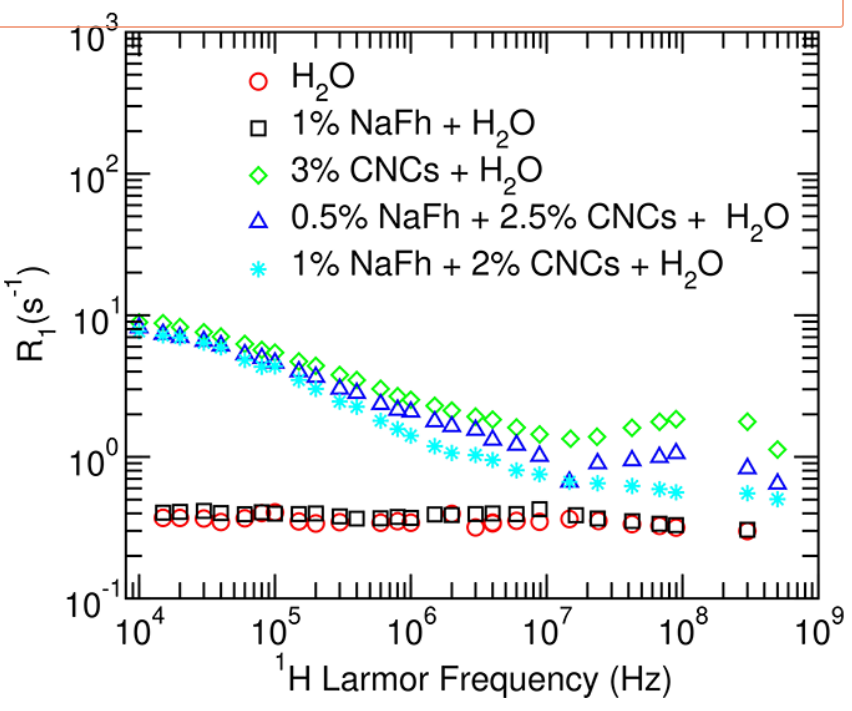1H spin–lattice relaxation time (T1) measurements were performed to probe the dynamic behavior of water in aqueous suspensions of cellulose nanocrystals (CNCs) and a layered smectite clay mineral with different degrees of concentration. 1H–T1 experiments were carried out over a wide frequency domain, ranging from a few kilohertz to 500 MHz, with the aid of conventional and fast field cycling nuclear magnetic resonance (NMR) techniques. The experimental relaxometry data illustrate differences between the dynamic behavior of bulk water and that confined in the vicinity of CNC–clay surfaces. Clay alone in moderate concentration was found to enforce almost no effect on the water dynamics, whereas introducing CNCs to the system presented a significantly enhanced relaxivity. The modeling of the relaxation dispersions allowed the determination of dynamical processes and variables explaining the dynamic behavior of water in CNC–clay suspensions. It turned out that reorientations mediated by translational displacements are a leading NMR relaxation mechanism for water interacting with the surfaces of CNC–clay particles in the low-frequency domain. In the high-frequency regime, however, the inner-sphere paramagnetic relaxation mechanism dominates, which is caused by the interaction of water protons with dissolved Fe ions.
Download a copy of the manuscript

